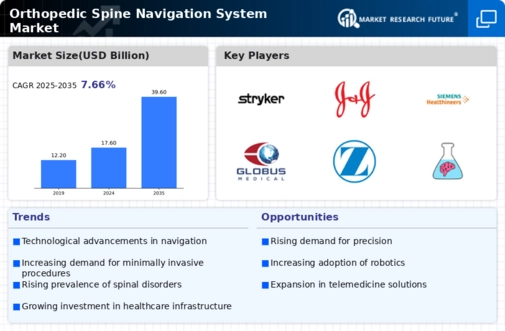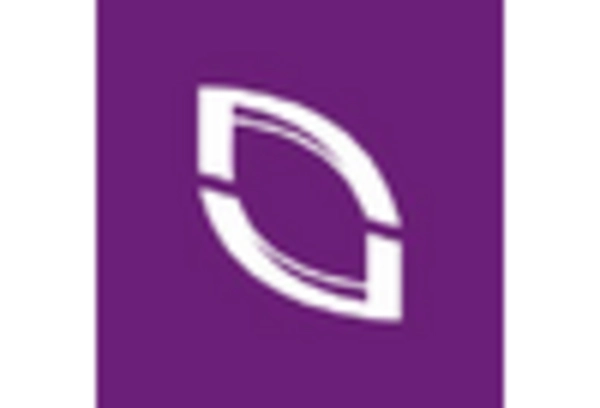Surgeon Training and Education
The emphasis on surgeon training and education is an essential factor influencing the Orthopedic Spine Navigation System Market. As the complexity of spinal surgeries increases, the need for specialized training in the use of navigation systems becomes paramount. Educational programs and workshops are being developed to equip surgeons with the necessary skills to utilize these advanced technologies effectively. This focus on training not only enhances surgical proficiency but also boosts confidence in adopting new navigation systems. Consequently, as more surgeons become adept at using these tools, the demand for orthopedic spine navigation systems is likely to grow, contributing to market development.
Rising Incidence of Spinal Disorders
The increasing prevalence of spinal disorders is a significant driver for the Orthopedic Spine Navigation System Market. Conditions such as degenerative disc disease, scoliosis, and spinal stenosis are becoming more common, particularly among aging populations. As the incidence of these disorders rises, the demand for effective surgical interventions is also increasing. Market data suggests that the number of spinal surgeries performed annually is expected to grow, with estimates indicating a rise to over 1 million procedures by 2026. This growing patient population necessitates the use of advanced navigation systems to ensure successful surgical outcomes, thereby driving market expansion.
Healthcare Infrastructure Development
The ongoing development of healthcare infrastructure is a crucial driver for the Orthopedic Spine Navigation System Market. As countries invest in modernizing their healthcare facilities, the integration of advanced surgical technologies becomes a priority. New hospitals and surgical centers are increasingly equipped with state-of-the-art navigation systems, which are essential for performing complex spinal surgeries. Market analysis indicates that regions with robust healthcare infrastructure are witnessing a higher adoption rate of orthopedic spine navigation systems. This trend is expected to continue, as investments in healthcare infrastructure are projected to increase, thereby fostering growth in the orthopedic spine navigation systems market.
Minimally Invasive Surgical Techniques
The shift towards minimally invasive surgical techniques is a pivotal driver in the Orthopedic Spine Navigation System Market. These techniques offer numerous benefits, including reduced recovery times, less postoperative pain, and lower risk of infection. As surgeons seek to adopt these methods, the demand for navigation systems that facilitate minimally invasive procedures is increasing. Data indicates that minimally invasive spine surgeries have seen a rise in adoption rates, with some estimates suggesting that they account for over 60% of spinal surgeries performed. This trend is expected to continue, further propelling the growth of the orthopedic spine navigation systems market as healthcare providers strive to enhance patient outcomes.
Technological Advancements in Navigation Systems
The Orthopedic Spine Navigation System Market is experiencing a surge in technological advancements that enhance surgical precision and outcomes. Innovations such as augmented reality and advanced imaging techniques are being integrated into navigation systems, allowing surgeons to visualize complex spinal anatomy in real-time. This integration not only improves the accuracy of spinal procedures but also reduces the risk of complications. According to recent data, the market for navigation systems is projected to grow at a compound annual growth rate of approximately 10% over the next five years. As hospitals and surgical centers increasingly adopt these advanced technologies, the demand for orthopedic spine navigation systems is likely to rise, driving market growth.


















Leave a Comment